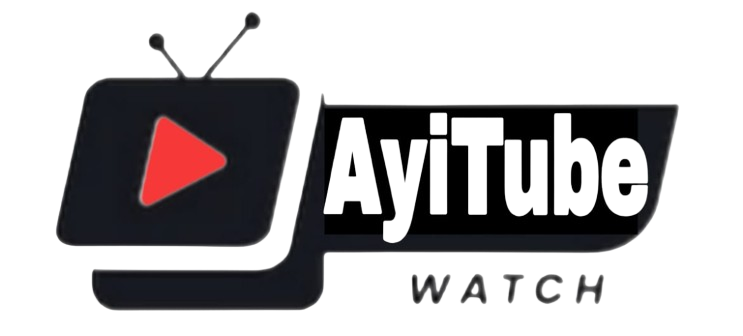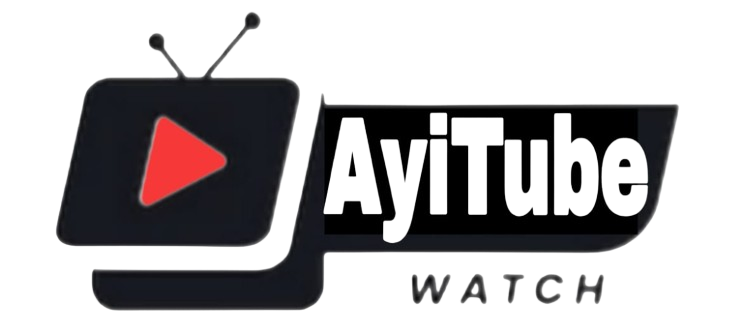U.S. Hematology Oncology Market: Current Landscape, Trends, and Future Outlook
Introduction
The U.S. hematology oncology market has emerged as one of the most dynamic segments in the healthcare and pharmaceutical industry, driven by the increasing prevalence of blood cancers and other hematologic disorders. Hematology oncology, which focuses on the diagnosis, treatment, and management of cancers affecting blood, bone marrow, and the lymphatic system, has witnessed significant advancements in recent years. With the advent of targeted therapies, immunotherapies, and personalized medicine, the U.S. market is not only growing in terms of size but also evolving in complexity and innovation.
The rising incidence of leukemia, lymphoma, and multiple myeloma, coupled with advancements in diagnostic technologies, is creating substantial opportunities for pharmaceutical companies, biotech firms, and healthcare providers. Additionally, government initiatives, clinical trials, and supportive healthcare policies have facilitated the development and adoption of innovative therapies. As a result, the U.S. hematology oncology market is poised for strong growth, presenting lucrative opportunities for both existing players and new entrants.
Review comprehensive data and projections in our U.S. Hematology Oncology Market report.
Download now: https://www.databridgemarketresearch.com/reports/us-hematology-oncology-market
Market Overview
The U.S. hematology oncology market has witnessed remarkable growth over the past decade, fueled by increased research investment, technological innovation, and a growing patient population. The market encompasses a wide range of treatment modalities, including chemotherapy, targeted therapy, immunotherapy, and stem cell transplantation.
Key market drivers include:
Rising prevalence of blood cancers: Leukemia, lymphoma, and myeloma cases continue to increase, leading to higher demand for effective therapies.
Technological advancements: Innovations in diagnostic tools, precision medicine, and molecular profiling have enabled more accurate diagnosis and personalized treatment.
Regulatory support: The U.S. Food and Drug Administration (FDA) has accelerated approval processes for breakthrough therapies, encouraging investment in research and development.
Growing healthcare expenditure: Increased spending on oncology care has expanded access to advanced treatments and improved patient outcomes.
Despite these drivers, the market faces challenges such as high treatment costs, complex regulatory requirements, and limited patient awareness in certain regions. However, the overall market sentiment remains positive, with a strong pipeline of emerging therapies and ongoing clinical trials indicating continued growth potential.
Market Segmentation
The U.S. hematology oncology market can be segmented by disease type, treatment type, and therapy type.
By Disease Type
Leukemia: Representing a significant share of the market, leukemia treatment is characterized by chemotherapy, targeted therapy, and stem cell transplantation.
Lymphoma: Treatments include immunotherapy, monoclonal antibodies, and combination therapies.
Multiple Myeloma: Advances in proteasome inhibitors and immunomodulatory drugs have transformed the treatment landscape.
Other Hematologic Disorders: Conditions such as myelodysplastic syndromes and aplastic anemia are also contributing to market demand.
By Treatment Type
Chemotherapy: Remains a standard treatment but is increasingly combined with novel therapies for improved outcomes.
Immunotherapy: Includes CAR-T cell therapy, checkpoint inhibitors, and monoclonal antibodies.
Targeted Therapy: Focuses on specific genetic markers to inhibit cancer progression.
Stem Cell Transplantation: High-cost treatment that is vital for certain hematologic malignancies.
By Therapy Type
Small Molecule Drugs: Used in targeted therapies for specific cancer mutations.
Biologics: Includes monoclonal antibodies and recombinant proteins.
Advanced Therapies: Cell and gene therapies represent the next frontier in hematology oncology treatment.
Segment analysis indicates that immunotherapies and targeted therapies are experiencing the highest growth, driven by their superior efficacy, reduced side effects, and potential for personalized treatment.
Competitive Landscape
The U.S. hematology oncology market is highly competitive, with a mix of established pharmaceutical giants, emerging biotech companies, and specialized research institutions. Key strategies adopted by players include product innovation, strategic partnerships, mergers and acquisitions, and expansion of R&D facilities.
Leading companies are focusing on developing next-generation therapies such as CAR-T, bispecific antibodies, and precision medicines. Collaborative initiatives with academic institutions and clinical research organizations are also shaping the competitive environment. Additionally, several companies are investing in digital health solutions to support patient monitoring, adherence, and treatment outcomes.
Market Dynamics
Drivers
Increasing Cancer Incidence: Rising cases of blood cancers are driving demand for innovative treatment options.
Technological Innovation: Advancements in molecular diagnostics and AI-driven oncology tools are enabling better treatment planning.
Rising Healthcare Spending: Increased funding for cancer care has improved access to advanced therapies.
Restraints
High Treatment Costs: Advanced therapies, particularly CAR-T and personalized medicine, are expensive and may limit accessibility.
Regulatory Challenges: Stringent approval processes and clinical trial requirements can delay therapy launches.
Side Effects and Risks: Some therapies pose significant adverse effects, affecting patient adoption.
Opportunities
Personalized Medicine: Tailoring therapies based on genetic profiling is gaining momentum.
Immunotherapy Expansion: CAR-T and checkpoint inhibitors offer potential breakthroughs.
Digital Oncology: Telemedicine, remote monitoring, and AI-based diagnostics are creating new growth avenues.
Challenges
R&D Complexity: Developing effective hematology oncology therapies requires significant investment and expertise.
Market Access Barriers: Insurance coverage, reimbursement policies, and healthcare infrastructure affect patient access.
Recent Trends and Innovations
Recent years have witnessed remarkable innovation in the U.S. hematology oncology market. CAR-T cell therapy, a personalized immunotherapy, has revolutionized treatment for certain leukemias and lymphomas. Similarly, bispecific antibodies and checkpoint inhibitors are gaining traction due to their targeted action and improved patient outcomes.
Precision medicine is reshaping clinical decision-making by using genetic profiling to identify the most effective therapies for individual patients. Additionally, AI-driven diagnostic tools and digital health platforms are streamlining patient management, improving adherence, and enhancing the efficiency of clinical trials.
Emerging research in gene editing and next-generation cell therapies promises to address previously untreatable hematologic conditions, further driving market expansion.
Regional Analysis
Within the U.S., certain states and metropolitan areas have emerged as key hubs for hematology oncology research and treatment. Cities with leading cancer centers, specialized hospitals, and biotech clusters, such as Boston, New York, San Francisco, and Houston, are driving innovation and therapy adoption. Regional differences in healthcare infrastructure, patient demographics, and access to advanced treatments influence the growth trajectory across states.
Future Outlook
The U.S. hematology oncology market is expected to experience robust growth over the next five to ten years. With continuous investment in R&D, expansion of advanced therapies, and increasing awareness of hematologic cancers, the market is projected to witness significant innovation and adoption. Emerging therapies such as CAR-T, gene editing, and personalized immunotherapies are likely to redefine standard treatment protocols, offering new hope to patients.
The integration of digital tools, AI, and precision diagnostics will further enhance treatment outcomes, patient monitoring, and clinical efficiency. As regulatory pathways continue to evolve, the market is likely to benefit from accelerated therapy approvals and broader patient access.
Conclusion
The U.S. hematology oncology market is at the forefront of medical innovation, driven by rising disease prevalence, technological advancement, and evolving treatment paradigms. While high costs and regulatory challenges remain obstacles, the market presents immense opportunities for pharmaceutical companies, healthcare providers, and investors. Innovations in immunotherapy, targeted therapy, and precision medicine are transforming patient care and reshaping the competitive landscape.
As the market continues to evolve, stakeholders who invest strategically in R&D, collaborative initiatives, and digital health integration are likely to achieve sustainable growth and contribute significantly to improving patient outcomes.
FAQs
- What is the U.S. hematology oncology market?
The U.S. hematology oncology market involves the treatment and management of blood cancers and hematologic disorders, including leukemia, lymphoma, and multiple myeloma. It encompasses therapies such as chemotherapy, immunotherapy, targeted therapy, and stem cell transplantation. - What are the key drivers of market growth?
Market growth is driven by rising cancer prevalence, technological advancements, increased healthcare expenditure, regulatory support, and the development of innovative therapies. - Which therapies are growing fastest in the U.S. hematology oncology market?
Immunotherapies and targeted therapies are experiencing the highest growth due to their effectiveness, lower side effects, and ability to personalize treatment for patients. - Who are the major players in the market?
The market includes established pharmaceutical companies, biotech firms, and specialized research institutions focusing on hematology oncology therapies and innovation. - What are the challenges facing the market?
High treatment costs, stringent regulations, complex R&D processes, and patient access barriers are significant challenges affecting the market. - What innovations are shaping the future of hematology oncology in the U.S.?
CAR-T therapy, bispecific antibodies, checkpoint inhibitors, gene editing, precision medicine, and AI-driven diagnostics are the key innovations shaping the market. - What is the future outlook for the U.S. hematology oncology market?
The market is expected to grow robustly over the next decade, driven by technological advancements, new therapies, digital health integration, and increasing awareness of hematologic cancers.
Browse More Reports:
Global Liver Health Supplements Market
Global Locasomide Market
Global Location-based Ambient Intelligence Market
Global Low Temperature Coating Market
Global Lyophilized Powder Market
Global Lysosomal Acid Lipase Deficiency (LAL-D) Market
Global Malic Acid Market
Global Mammalian Polyclonal IgG Antibody Market
Global Marine Communication Systems Market
Global Maritime Safety Market
Global Marketing Calendar Software Market
Global Maternal Blood Test Market
Global Meal Kit Packaging Market
Global Media Monitoring Tools Market
Global Medical Bed Market
About Data Bridge Market Research:
An absolute way to forecast what the future holds is to comprehend the trend today!
Data Bridge Market Research set forth itself as an unconventional and neoteric market research and consulting firm with an unparalleled level of resilience and integrated approaches. We are determined to unearth the best market opportunities and foster efficient information for your business to thrive in the market. Data Bridge endeavors to provide appropriate solutions to the complex business challenges and initiates an effortless decision-making process. Data Bridge is an aftermath of sheer wisdom and experience which was formulated and framed in the year 2015 in Pune.
Contact Us:
Data Bridge Market Research
US: +1 614 591 3140
UK: +44 845 154 9652
APAC : +653 1251 975
Email:- corporatesales@databridgemarketresearch.com
- Art
- Causes
- Crafts
- Dance
- Drinks
- Film
- Fitness
- Food
- Oyunlar
- Gardening
- Health
- Home
- Literature
- Music
- Networking
- Other
- Party
- Religion
- Shopping
- Sports
- Theater
- Wellness


